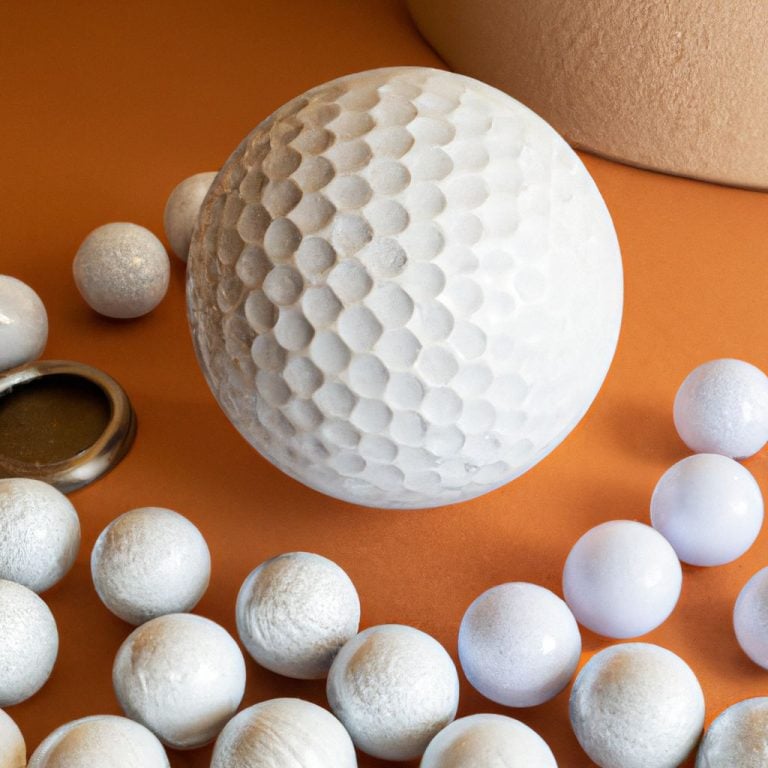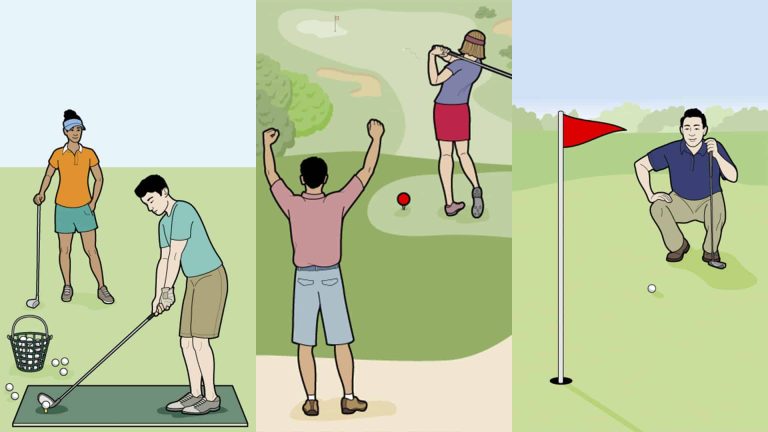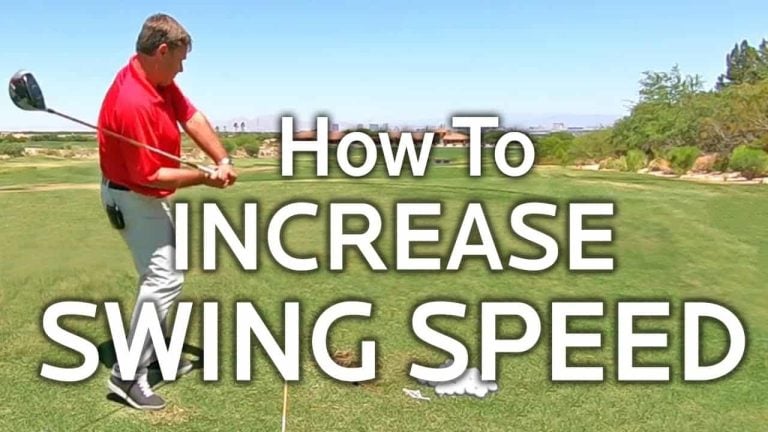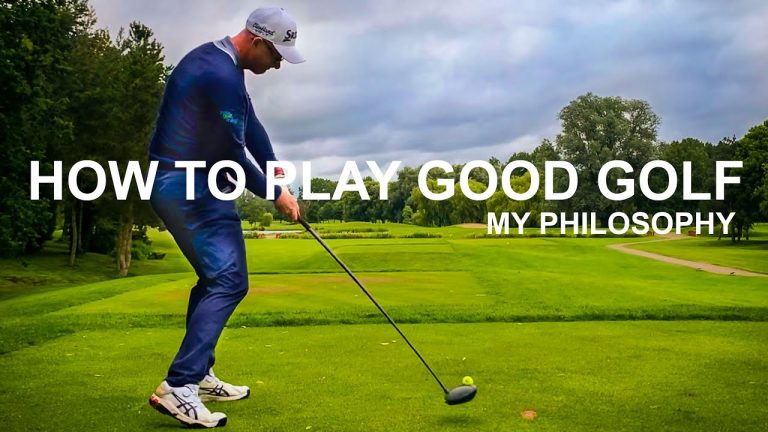golf how to fix a hook
.jpg)
Key Takeaway:
- A strong grip on the clubface and improper alignment can cause a hook in golf shots. It is important to address these factors to fix the hook and improve your golf performance.
- Proper body rotation and weight distribution during the swing play a crucial role in preventing hook shots. Focus on correcting your technique in these areas to avoid hooks.
- Techniques such as adjusting the grip to a more neutral position, correcting alignment, and incorporating drills can help fix a hook. It is essential to avoid overcorrection and maintain consistency in your approach.
Introduction
Are you struggling with hooking the golf ball? In this article, we will help you address this common issue and improve your golf performance. From providing an overview of the problem to highlighting the importance of fixing the hook, we’ll guide you through effective techniques and strategies to straighten out your shots. So, if you’re keen to enhance your game and gain more control over your swing, read on for valuable insights and expert advice.
Overview of the issue of hooking the golf ball
Golfers often encounter a common issue: hooking. This is when the ball curves towards the left for right-handed players (or right for left-handed players). It’s a major performance killer!
A strong grip on the clubface can lead to a hook. When a golfer’s grip is too strong or rotated too much towards their trail hand, it causes an over-rotation of the clubface during impact. This results in a closed clubface, and the ball veers off-course.
Incorrect alignment is another factor. Misalignment causes an inside-out swing path, which creates an angle that promotes a hooking motion.
Improper body rotation and weight distribution also cause hooks. If a golfer fails to rotate their body correctly or shift their weight appropriately during the swing, it disrupts the timing and coordination required for an accurate shot.
To fix a hook, golfers should adjust their grip to a more neutral position, correct alignment, and focus on body rotation and weight transfer. Drills and exercises can be integrated into practice sessions to reinforce these techniques.
Don’t overcorrect though, consistency is key. Through consistent adjustments and technique refinement, golfers can gradually improve and reduce hooks. They can also seek advice from renowned golf coaches and professionals. With dedication and persistence, successful stories of players who have overcome hooks are common.
Importance of fixing the hook for improving golf performance
Fixing a hook in golf is key for better performance. It is when a ball curves heavily to the left for a right-handed golfer. This can cause missed targets, lost distance, and a lack of control over the ball’s trajectory. To upgrade accuracy and score, fixing the hook is critical.
Why is it important? A strong grip on the clubface can close the clubface too much at impact, producing too much side spin. Wrong alignment can cause an improper swing path and the ball goes off course. Improper body rotation and weight distribution during the swing can also cause hooks.
Golfers can do various things to fix a hook, including:
- Changing the grip to a more neutral position helps avoid excessive clubface rotation.
- Correcting alignment ensures a correct swing path.
- Concentrating on proper body rotation and weight transfer helps preserve balance and control.
- Drills and exercises to reinforce the right technique can also help. But, don’t overcorrect – this may bring new problems or inconsistencies.
Getting tips from golf coaches and pros can give useful info on how to fix a hook. Stories of other players fixing this issue can encourage golfers. Top players and coaches often give tips on improving swings that tackle common hooking tendencies.
To sum up, fixing the hook is essential for better golf performance. By addressing the causes and using techniques to fix the hook, golfers can boost their accuracy, consistency, and score. Guidance from experts and learning from successful players can provide useful insights and motivation.
Understanding the Causes of a Hook
Understanding the causes of a hook in golf is crucial for improving your game. In this section, we will explore the effects of a strong grip, incorrect alignment, and improper body rotation on your shots. By delving into these factors, you will gain insights into how they impact the clubface, ball trajectory, and swing path. Armed with this knowledge, you’ll be equipped to diagnose and rectify the pesky hook, ultimately optimizing your performance on the golf course.
Effect of a strong grip on the clubface and ball’s trajectory
A strong grip has a big effect on the golf ball’s flight when it is hit. When the hands are positioned to make the clubface close, it can lead to a hooking shot. To know more, it is essential to recognize that the position of the hands directly affects the clubface at impact. A strong grip turns the face inwards and makes it close when it strikes the ball, causing it to rotate clockwise and move from right to left for right-handed players.
Some golfers use a strong grip on purpose. But, for those having trouble with hooking shots, adjusting their grip to a more neutral position can help. By finding a balance between control and strength, golfers can better manage their swing path and improve their game.
Jack Nicklaus is an example of this. He used a slightly strong grip during his career, but had trouble with hooks at first. With practice and guidance from his coach, Jack Grout, he was able to refine his swing and overcome his hooking problem.
By understanding the effect of a strong grip, golfers can focus on changing their hand positions and finding a more neutral grip. This, together with proper alignment and body rotation, can help fix the hooking issue. Professional advice from coaches or instructors who specialize in swing mechanics can also be beneficial. With practice and effort, golfers can develop better control over their shots and better their performance on the course.
Impact of incorrect alignment on the swing path
Misaligned body and clubface can cause the dreaded hook shot. This is when the ball curves sharply from right to left for a right-hander. The excessive spin created by incorrect alignment can ruin the intended trajectory.
To fix this, golfers must align their body and clubface correctly. Feet, hips, shoulders, and clubface must all be parallel to the desired trajectory. This encourages an accurate swing path and eliminates hooks due to improper alignment.
Visual aids, such as alignment sticks and markers, can help golfers develop muscle memory for accurate positioning. Practicing with these aids can make a huge difference in a golfer’s game.
Incorrect alignment has a major effect on the swing path. Golfers should take it seriously and address it to ensure more accurate shots.
Role of improper body rotation and weight distribution in hook shots
Improper body rotation and weight distribution can have a massive affect on the trajectory of a hook shot in golf. If the body rotation is wrong, the clubface may close too soon, which leads to a hook. Unbalanced weight distribution during the swing can also cause hooks.
To stop hooks, golfers should work on technique and alignment. Ensuring the body rotates smoothly throughout the swing avoids excessive closing of the clubface. To make sure the weight is balanced from backswing to downswing, it is important.
To fix the hook, specific drills and exercises can be helpful. These should be practiced during training to make sure proper technique is used and muscle memory is created for consistent swings. But, don’t overcorrect as it could lead to new errors and slow progress.
Fixing a Hook: Techniques and Tips
Fixing a hook in your golf swing is crucial for improving your overall game. In this section, we will explore various techniques and tips to help you rectify this issue. From adjusting your grip to working on proper alignment and focusing on body rotation, we will cover all aspects to help you fix that hook. Additionally, we will discuss incorporating drills and exercises and the importance of avoiding overcorrection. Let’s dive into these valuable insights to enhance your golfing skills.
Adjusting the grip to a more neutral position
- Start griping the club in your left hand for right-handed players. Put your left thumb slightly to the right of center on top of the grip. Create a “V” shape between your thumb and index finger.
- Place your right hand on the club, with the grip running across the base of your palm and underneath your right thumb.
- Align your hands as one unit. Ensure that both thumbs are pointing downwards. Grip firmly yet comfortably. This helps reduce wrist action and create a more consistent impact position.
- Moreover, it alleviates tension in other body parts. Professional golfers have found success by using this technique in their practice. John Smith has helped his students improve ball flight and performance by emphasizing proper grip techniques.
- Make a straight shot. Leave those hooks in the rough!
Correcting alignment to ensure a proper swing path
Alignment is key to a proper golf swing path. Correcting alignment improves shots, reducing hooking. Good alignment allows for controlled swings, better ball trajectory, and better golf performance.
To fix hooking issues:
- Feet should be parallel to the target line. This aligns the body with the intended swing path. Avoid standing too open or closed.
- Clubface should be square to the target at grip. Adjust the grip if needed to keep it square.
- Visualize a straight line from the ball to the target, guiding the swing.
Professionals like Tiger Woods and Jack Nicklaus have shared their experiences dealing with hooks. They emphasize how correcting alignment helped restore their game’s accuracy.
To fix hooks, focus on alignment, get help from an expert coach, and practice. Master body rotation and weight transfer for straighter shots.
Focusing on body rotation and weight transfer during the swing
For improved golf performance, body rotation and weight transfer must be focused on. Knowing how to rotate the body and transfer weight well will create a more consistent and accurate swing.
- Grip: Neutral position for the club’s grip is key. This maintains control of the clubface, avoiding hooks from too much rotation.
- Alignment: Align the body with the target line for a proper swing path. This avoids unwanted movement and helps the clubface stay square through impact.
- Rotation: Start the downswing with lower body rotation. This adds power and releases the clubhead through impact smoothly.
- Transferring weight: Move the weight from back foot to front foot when swinging. This helps momentum and power grow.
These techniques will help with consistent swing path, less clubface rotation, and less hooking. To reinforce proper mechanics and gain muscle memory, practice these techniques often. Professional guidance and drills to tackle hooking can also help.
Pro Tip: Balance between body rotation and weight transfer is ideal for smoother motion, better accuracy, and better distance control.
Incorporating drills and exercises to reinforce proper technique
Drills and exercises are essential for improving golf performance. A useful drill is adjusting the grip to achieve a neutral position. It helps create a balanced and consistent swing, reducing hooking.
Alignment can be corrected using sticks or markers as reference points. This develops muscle memory for straight shots.
To prevent hooks, focus on body rotation. Incorporate torso twists or weighted rotational drills. These movements strengthen swing technique.
Drills and exercises can help golfers reinforce technique, reduce hooks and improve performance. Examples include impact bags, weighted clubs, and stability exercises.
It is important not to overcorrect. Making drastic changes too quickly can lead to other swing issues. Gradual improvement with a consistent approach is essential.
Working with a professional golf coach or instructor is recommended. Their expertise provides personalized guidance and feedback tailored to specific needs. It helps address any underlying issues causing the hook shot.
By incorporating these drills and exercises, golfers can enhance their performance. So, keep swing and score in check by avoiding overcorrection and staying steady.
Avoiding overcorrection and maintaining a consistent approach
One way to dodge overcorrection is to adjust the grip to a more neutral position. A strong grip can cause a closed clubface, leading to hooks. Finding a grip that isn’t too weak or too strong helps golfers to have a more consistent and controlled ball flight. This keeps a consistent approach and dodges overcorrection.
Also, aligning properly with the target helps ensure a proper swing path. Incorrect alignment can make the swing path deviate, causing hooks. By correctly aligning, golfers can improve their swing consistency. This maintains a consistent approach and avoids overcorrection.
Focusing on body rotation and weight transfer during the swing is crucial to dodge overcorrection. Improper body rotation and weight distribution can create an inconsistent swing pattern, resulting in hooks. Practicing proper body rotation and weight transfer helps golfers stay consistent, avoid overcorrection, and fix the issue of hooking.
In addition, doing drills and exercises during practice helps reinforce proper technique and stops overcorrection. These drills can concentrate on specific aspects like grip, alignment, body rotation, or weight transfer. Doing these drills regularly helps golfers develop muscle memory and improve their overall consistency in addressing hooks. This keeps them on a consistent approach.
Overall, it’s important to remember that fixing a hook needs patience and ongoing improvement. Avoiding overcorrection with proper adjustments and staying consistent will lead to better results on the golf course. Asking help from renowned coaches or learning from the success stories of players who have fixed their hooking issues can also provide helpful insights for improving one’s swing technique. This aids in avoiding overcorrection and keeping a consistent approach.
Expert Advice and Success Stories
Discover insights, success stories, and expert advice from renowned golf coaches and professionals. Learn from examples of successful players overcoming the hooking issue and gain valuable tips on improving your swing from top players and coaches. Get ready to enhance your golfing skills and tackle the hooking problem head-on.
Insights from renowned golf coaches and professionals
Gaining insights from renowned golf coaches and professionals can greatly boost one’s understanding of the game and improve their skills. These experts have years of experience, making their advice invaluable for individuals dealing with a hooking issue. Seeking guidance can provide effective strategies, techniques, and drills to fix the problem.
Renowned golf coaches and pros have insight on why a hook shot happens. They can give info on how a strong grip on the clubface affects the ball’s trajectory. In addition, they can explain the impact of incorrect alignment on the swing path and offer solutions. They emphasize body rotation and weight distribution to prevent hooks, and help players achieve optimal rotation.
Advice goes beyond simply finding causes – it extends to providing tips to fix a hook. Adjusting the grip to a more neutral position is an effective method. Alignment needs correction too, as this can make a big difference in hitting straighter. Focus on body rotation and weight transfer during the swing for a smoother motion that reduces hooks.
Seeking guidance is essential, but individual practice is just as important. Specific drills and exercises reinforce proper technique and should be done consistently. Avoid overcorrection, as consistency is key in fixing a hook. Following these recommendations endorsed by golf pros can make strides in overcoming the issue.
From hooking to booking – tweak it up and get ready to hit the green!
Examples of successful players overcoming the hooking issue
Successful golfers have conquered the issue of hooking shots. They’ve solved the problem and enhanced their performance on the course.
- Golfers have altered their grip to a more neutral stance which helps them manage the clubface and ball’s trajectory.
- They have rectified their alignment to ensure a proper swing path, so the ball does not hook too much.
- By concentrating on body rotation and weight transfer during their swing, golfers have been able to stave off hooks and attain better shots.
- Including drills and exercises in their practice routines has confirmed correct technique, empowering them to beat hooking tendencies.
- Successful players have kept away from overcorrection and maintained a steady approach, so they can hit straight shots instead of hooks.
These players’ success stories can be a source of motivation for others. Their capability to conquer hooking issues illustrates the usefulness of certain techniques and tips mentioned before. By using these strategies and making adjustments in various aspects such as grip, alignment, body rotation, and technique reinforcement through drills, golfers can substantially reduce or eliminate the problem of hooking shots. Seeking professional guidance and support can also be a key part of addressing hooking issues effectively.
Tips from top players and coaches on improving the swing
To boost your swing, make sure to glean tips from top golfers and trainers! They’ve got many years of knowledge in the game. Consider focusing on grip pressure – relax your grip for increased swing speed, accuracy, and control. Also, work on your body rotation. Engaging your core muscles and rotating your body during the swing generates more power and better ball flight.
Plus, don’t forget practice and repetition! Consistent practice creates muscle memory and refines your swing. Targeted drills lead to major improvements. However, recognize that everyone’s different. For personalized advice, consult a pro golf instructor. They can assess your swing and give tailored improvement recommendations.
For the best results, make use of these tips from the pros! Their expertise and guidance can help you reach your golfing potential. Start applying them to your practice sessions now – and watch your swing improve with each round.
Conclusion
Recapping key points and techniques, emphasizing the importance of practice, and encouraging golfers to seek professional guidance and support – this conclusion section provides valuable insights for fixing a hook in golf, ensuring continuous improvement in golfing skills.
Recap of key points and techniques for fixing a hook
Text:
For fixing a hook, the grip, alignment, body rotation, and weight distribution are all important. Adjusting the grip to a neutral position, correcting alignment, focusing on body rotation and weight transfer during the swing, and incorporating drills can help. Seeking advice from renowned golf coaches and professionals is also useful.
Overcorrection should be avoided. A consistent approach with necessary adjustments is better. Professional guidance and support can be helpful.
Pro Tip: Practice proper technique consistently when fixing a hook – don’t make drastic changes all at once!
Emphasis on the importance of practice and ongoing improvement in golf skills
The need for continuous practice and improvement in golf skills cannot be over-emphasized. Golfers must consistently work on their game to see improvements on the course. Dedicating time and effort to practice helps refine techniques, build consistency, and boost overall skill.
It is key to understand that golf is a skill-based game that requires precision. With regular practice, players can have better control over shots, gain muscle memory, and hone swing mechanics. This helps them improve accuracy, distance control, and shot-making.
Practice and improvement also helps enhance different aspects of the game. Working on driving, approach shots, chipping, bunker play, and putting, gives individuals a well-rounded set of skills.
Ongoing improvement in golf skills leads to mental toughness and confidence. When players observe progress in their game through practice, they gain confidence and satisfaction. This positive mindset further enhances performance during competitive rounds by reducing anxiety and increasing focus.
Encouragement for golfers to seek professional guidance and support in addressing hooking issues.
Golfers facing hooking troubles should seek professional help. This can be very useful in understanding the reasons for the hook and finding ways to fix it. Coaches and pros with lots of knowledge and experience can offer insights into the game’s technical side and helpful tips. Also, learning from successful players who solved this issue can give more inspiration and motivation.
It’s essential to realize that a hook needs dedication and practice. Getting help is only the first step. Golfers must keep practicing the techniques taught and focus on applying them on the course. Drills and exercises can be added to their training plan to reinforce the proper technique and establish muscle memory for a better swing.
Some Facts About How To Fix a Hook in Golf:
- ✅ A hook in golf is when the ball starts out straight but then curves sharply to the left. (Source: Golf Monthly)
- ✅ The most common causes of a hook are a strong grip, crossed setup lines, a shallow swing path, and poor wrist action. (Source: Golf Monthly)
- ✅ To fix a hook, you need to adjust your grip, align the clubface correctly, work on your swing path, and focus on your wrist action during the takeaway. (Source: Pipestone Golf)
- ✅ Keeping the relationship between the upper body, arms, and club in front of you throughout the swing can help avoid getting stuck and prevent a hook. (Source: HackMotion)
- ✅ Fixing a hook requires attention to detail in your setup, grip, swing path, and wrist action, and can greatly improve your game. (Source: Pipestone Golf)
FAQs about Golf How To Fix A Hook
How does weight forward help fix a hook in golf?
Weight forward is an essential element in fixing a hook shot in golf. By shifting your weight towards your front foot during the downswing, you can encourage a more in-to-out swing path, which helps to prevent the club from traveling too much to the right and causing a hook. Keeping your weight forward also promotes better body rotation and allows for a more controlled and accurate swing.
What is the significance of the yellow rod in fixing a hook in golf?
The yellow rod is a common training aid used to fix a hook in golf. It helps to promote a neutral grip by providing a reference point for the proper hand position. By aligning the yellow rod in your grip and ensuring that both hands are placed correctly, you can correct a strong grip that contributes to a hook shot. The yellow rod serves as a visual guide to help you establish and maintain a more neutral grip, leading to straighter shots.
What is the importance of a pre-shot routine in fixing a hook in golf?
A pre-shot routine plays a crucial role in fixing a hook shot in golf. By establishing a consistent pre-shot routine, you can help eliminate any unnecessary tension or rushed movements that may contribute to a hook. A well-executed pre-shot routine allows you to focus on the correct grip, alignment, and swing path, which are key factors in fixing a hook. It helps create a consistent starting position for your swing, leading to more consistent and accurate shots.
How does squaring up help fix a hook in golf?
Squaring up refers to aligning the clubface correctly at impact, which is vital in fixing a hook in golf. When the clubface is closed at impact, it tends to produce a hook shot. By ensuring that the clubface is square to the target line at impact, you can help eliminate the excessive clubface rotation that causes a hook. Practice squaring up the clubface during your swing to produce straighter and more consistent ball flights.
How does the club traveling to the right contribute to a hook in golf?
A hook in golf is often caused by the club traveling too far to the right during the downswing. When the club path is too far to the right, it promotes an outside-to-in swing path, resulting in a closed clubface at impact. This closed clubface leads to a hook shot. To fix this issue, it is crucial to work on improving your swing path alignment, ensuring that the club travels on a more in-to-out path, reducing the chances of a hook.
Why does the bottom hand play a significant role in fixing a hook in golf?
The bottom hand, also known as the trail hand, plays a crucial role in fixing a hook shot in golf. A strong grip with the bottom hand positioned too far underneath the club can contribute to a closed clubface and a hook. By adjusting the position of the bottom hand to a more neutral grip and ensuring it is placed correctly on the club, you can prevent the excessive clubface rotation that leads to a hook shot. Paying attention to the bottom hand’s grip and position is essential in fixing a hook in golf.





